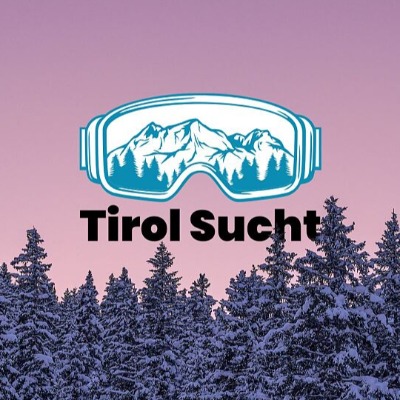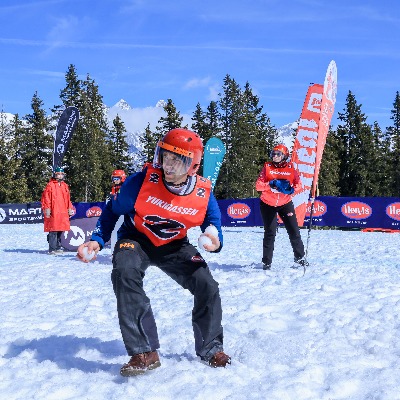Vorarlberg Asks - What Will Winter Be Like In The Next Few Decades?

Climate change also affects winter in the Alps. Current studies by the Vorarlberg mountain railways, which were implemented in cooperation with GeoSphere Austria and presented, look at what this actually means for the Vorarlberg ski areas. The result: skiing remains possible in Vorarlberg in the long term thanks to sufficient natural snow cover and technical snowmaking. At the same time, autumn will become more and more important and the summer season will lengthen. Regardless, climate protection is the order of the day. The mountain railways are already implementing a variety of measures in the areas of climate protection and sustainability and will continue to expand these in the future.
The regional development of snow reliability and thus the future of the Vorarlberg mountain railways is more relevant than ever in the context of climate change. In order to remain able to act in the long term and implement appropriate strategies and measures, an objective factual basis is required. “We are aware of our responsibility for nature, the region and the people who live here. The mountains are both our home and our professional livelihood. That's why it's a matter of course for us that we deal with climate change and its consequences for the region and the cable car industry. Based on this intention, both Silvretta Montafon and Oberstdorf Kleinwalsertal Bergbahnen independently commissioned studies from GeoSphere Austria.
Background and scenarios
The studies are based on regional climate simulations from the European EURO-CORDEX initiative. The results for the future are described using three different scenarios: One scenario describes the Paris goal, which, if achieved, will keep global warming below +2 degrees Celsius by 2100. The second scenario is somewhat less ambitious, and the third scenario describes the “fossil path” without any climate protection. “If we take into account the climate protection guidelines that have already been implemented worldwide, we are currently on a path that lies between the fossil path and the less ambitious climate protection scenario,” explains Andreas Gobiet, climate researcher and avalanche forecaster at GeoSphere Austria, adding: “For the studies, we examined different altitudes with regard to the duration of the natural snow cover, winter temperature and precipitation as well as the meteorological conditions for technical snowmaking. The evaluations show the expected change in the next 30 years compared to the average of the past 30 years. In Kleinwalsertal we also analyzed the weather conditions for leisure activities outside of winter.”
The importance of technical snowmaking is increasing
The results show that a trend towards more winter precipitation can be expected by 2050. At the same time, the duration of the natural snow cover will shorten, depending on the altitude and the assumed scenario. For example, at an altitude of 1,500 meters in the Silvretta Montafon area, in the medium scenario, a reduction in the snow cover duration from 134 days to 117 days can be expected; at high altitudes at 2,400 meters, the snow cover duration is reduced from 270 to 255 days. In the Kleinwalsertal region, in the same scenario, the snow cover duration is reduced from 219 to 209 days at an altitude of 1,900 meters and from 129 to 116 days at lower altitudes at 1,100 meters. With regard to the framework conditions that make technical snowmaking possible, A reduction in potential snowmaking times of around 10 percent can be expected, especially at low altitudes. Higher altitudes are significantly less affected here. “The developments show that we will be able to offer our core product, skiing, in Vorarlberg for the next 30 years. At the same time, technical snowmaking is becoming increasingly important. On the one hand, in terms of the planning security that guests expect. On the other hand, the basic supply of snow needs to be secured in the long term,” says Andreas Gapp. that is expected by the guests. On the other hand, the basic supply of snow needs to be secured in the long term,” says Andreas Gapp. that is expected by the guests. On the other hand, the basic supply of snow needs to be secured in the long term,” says Andreas Gapp.
Climate protection and year-round tourism in focus
Kilian Zinnecker, Head of Sustainability at Silvretta Montafon, explains what the results mean for the Silvretta Montafon ski area: “90 percent of the Silvretta Montafon ski area is between 1,500 meters and 2,400 meters. Given the altitude and the study results, we are optimistic about the future. Nevertheless, it is important that we continue to intensify and expand our efforts in the area of sustainability." Regarding the plans for the future, he adds: "We are implementing numerous measures in the area of climate protection and have adapted our sustainability strategy in accordance with the study results: Among other things, We used the first hybrid snow groomer in Vorarlberg, were the initiators of the Green Ticket, have massively expanded the e-mobility infrastructure and are currently in the process of implementing a PV offensive. At the same time, we are also relying on adaptation strategies, for example by focusing on higher altitudes or further expanding summer offerings.” The importance of year-round tourism is also reflected in the study results: The number of suitable days for outdoor sporting activities will increase in autumn, which means that the mountain summer is extended overall. “In recent years, the Vorarlberger Bergbahnen have successively invested in year-round tourism and created attractive summer mountain adventure offerings. This trend will continue in the future and summer will continue to grow in importance overall. But it is much more important to continue to place climate protection at the focus of our considerations and strategies. In the past, the Vorarlberger Bergbahnen have already implemented numerous projects and measures. We as a society must consistently pursue this path in the future - we are all challenged here. So that not only we, but also future generations can enjoy and experience the unique habitat of the Vorarlberg mountains. Because we all bear responsibility for it,” emphasizes Andreas Gapp in conclusion.
Vorarlberg cable car specialist group
The Vorarlberg Cable Cars specialist group represents the interests of 70 members and 32 ski areas. Cable cars and lifts are in operation throughout Vorarlberg, serving a total of around 1,000 kilometers of slopes. On average, the Vorarlberg cable car companies employ over 1,000 employees and 25 apprentices.
Factbox cable cars Vorarlberg:
- Board of Directors: Chairman Dr. Andreas Gapp (Kleinwalsertaler Bergbahn AG)
- Chairman-Deputy Mag. Christoph Pfefferkorn (Skilifte Lech Ing. Bildstein GmbH)
- Chairman-Deputy Thomas Lerch (Gargellner Bergbahnen GmbH & Co KG)
- Managing Director Mag. Michael Tagwerker
- Members: 70 companies, 32 ski areas
- Number of lifts: cable cars, chair lifts, drag lifts













